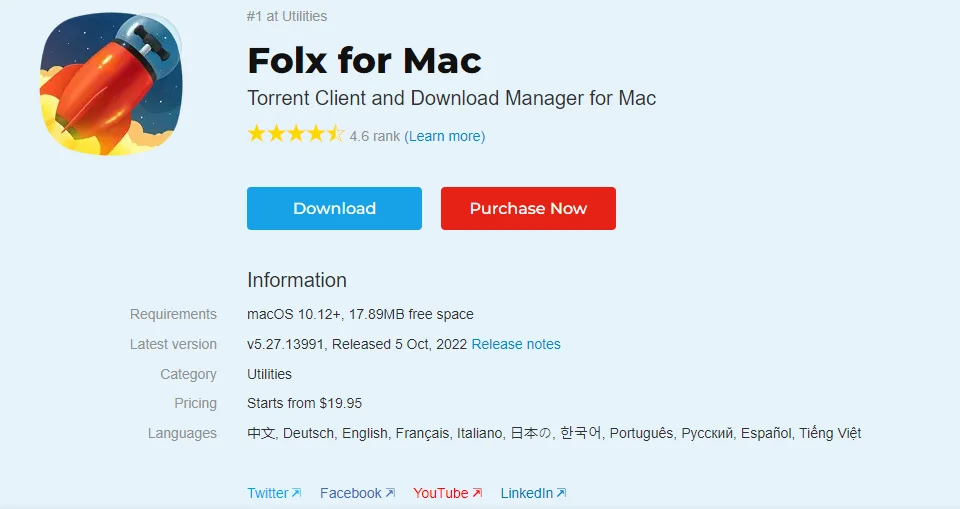APPS & SOFTWARE
Nearshore Vs. Offshore Development Outsourcing: Let’s Make a Brief Comparison

If you are a business owner, and you are delegating your tasks (whether fully or partially) to a third-party team or company, you are outsourcing. Also, if you collaborate with a service provider to assemble and run a technical team to work from a distance for your project, then you are outsourcing as well. In the IT world, software development outsourcing is the business strategy trusted by many and many tech or non-tech companies all around the world, especially when the era of digitalization and advanced technologies have shortened geographical distances. It depends on the location and the requirements of a company, whether they choose to outsource nearshore or offshore development. These two terms are often used in confusion, but there are significant differences between them.
Difference #1: Definition of Nearshore and Offshore Software Development Outsourcing
The first obvious difference lies in the nature of each software outsourcing approach as they seem to be opposite in their definitions.
- Nearshore Outsourcing: Basically, nearshore outsourcing or nearshoring refers to contracting software development tasks to service companies in neighboring or nearby countries, typically within the same continent. This approach enables business owners to leverage geographical proximity, which often means similar time zones, cultural affinities, and easier communication. For example, a U.S. company might outsource software development to Mexico or Canada.
- Offshore Outsourcing: Similar to nearshoring, offshore outsourcing is the act of partnering with a software development company located in distant countries, usually on different continents. This strategy can involve significant time zone differences and cultural variations. A prime example would be a tech company based in the U.S. delegating its project to Vietnam – one of the hotspots on the global IT map. The primary motivation for offshore outsourcing is often significant cost savings due to more affordable labor costs in the offshoring destination. The cost of outsourcing will link to the next point that makes nearshore and offshore outsourcing differ.
Difference #2: Benefits of Nearshore and Offshore Software Development
The second difference is that businesses go for one strategy rather than another.
Nearshore
Nearshore outsourcing offers several compelling advantages, primarily driven by geographical proximity. Working within similar time zones makes real-time communication and collaboration significantly easier. Teams can participate in meetings and provide updates during common business hours, which enhances productivity and reduces delays caused by time differences. Geographical proximity also facilitates more frequent and cost-effective on-site visits. Shorter travel distances make these visits feasible and less costly, fostering stronger relationships through face-to-face interactions. This is particularly valuable for project kick-offs, critical milestones, or resolving complex issues that are best addressed in person.
Cultural compatibility is another significant benefit of nearshore outsourcing. Neighboring countries usually share more cultural similarities, leading to smoother interactions and better mutual understanding. These shared cultural traits can result in fewer misunderstandings, more effective communication, and a more cohesive working relationship. For instance, a U.S. company may find it easier to work with a Mexican development team than with one from a very different cultural background. Additionally, nearshore teams often align better with Western standards of quality and business ethics. This alignment can result in higher-quality deliverables and reduced risks related to project delivery. The shared expectations regarding quality and performance streamline processes and create more reliable outputs.
Offshore
Offshore outsourcing offers the potential for substantial cost savings, as labor costs in countries like India, the Philippines, and Vietnam are significantly lower than those in North America or Western Europe. This cost efficiency allows companies to reduce their development expenses while still maintaining a high level of expertise and productivity. Additionally, offshore outsourcing opens access to a vast pool of skilled developers. Many offshore destinations place a strong emphasis on technical education, producing a large number of IT graduates each year. This extensive talent pool often includes specialized expertise that may be scarce or expensive locally, enabling companies to find the right skills tailored to their specific needs.
Moreover, businesses can benefit from round-the-clock productivity with teams working in different time zones. Projects can progress continuously as offshore teams pick up tasks at the end of the nearshore or onshore team’s day. This “follow-the-sun” model leads to faster turnaround times and quicker project completion, providing a competitive edge in time-sensitive markets. Furthermore, offshore locations often have larger pools of available talent, making it easier to scale teams up or down according to project demands. This flexibility is particularly beneficial for software projects with fluctuating workloads or for businesses needing to ramp up quickly to meet market demands. Companies can adjust their team size based on project requirements without long-term commitments, allowing for agile and responsive project management.

Difference #3: Obstacles When Nearshoring and Offshoring
Challenges of Nearshoring
Even though nearshore outsourcing offers a variety of benefits, it also comes with its own set of challenges. One significant obstacle is the higher costs compared to offshoring. While nearshoring can be more cost-effective than onshore options, the labor costs in nearby countries are typically higher than those in offshore destinations, which can reduce the financial advantages of outsourcing.
Another challenge is the limited talent pool. The geographical focus of nearshoring restricts the pool of available talent compared to the broader reach of offshore outsourcing. This limitation can make it harder for companies to find specialized skills or scale their teams effectively.
Additionally, political and economic instability in neighboring countries can pose risks to nearshore operations. Changes in government policies, economic downturns, or social unrest in these regions can disrupt business continuity and affect project timelines. Companies need to carefully assess the political and economic landscape of their nearshore partner countries to mitigate these risks.
Challenges of Offshoring
Offshore outsourcing, despite its numerous benefits, also faces several challenges. One of the primary obstacles is communication barriers. Significant time zone differences can complicate coordination and real-time communication. Linguistic and cultural differences can further hinder effective collaboration, leading to misunderstandings and delays.
Quality control issues are another common challenge in offshore outsourcing. Ensuring consistent quality across different regions can be difficult, as varying standards and practices may lead to discrepancies in the final product. Businesses must implement rigorous quality control measures and maintain regular oversight to ensure that deliverables meet their standards.
Security and privacy concerns are heightened when outsourcing to distant countries. Offshore outsourcing may involve greater risks related to data security and intellectual property protection when dealing with sensitive information. Companies need to enforce strict data protection policies and ensure compliance with international standards to safeguard their assets. Finally, longer onboarding and integration times can be a significant hurdle. Differences in business practices, work culture, and communication styles can lead to extended onboarding periods and integration times for offshore teams. This can delay project start times and impact overall productivity, requiring businesses to invest additional resources in training and team-building efforts.
APPS & SOFTWARE
Powerful Torrent Client for Mac | Fast Downloads & Easy Management

Upgrade Your Mac Experience with Our Torrent Client
Do you need help with downloads? Ditch the frustration! Our powerful Mac torrent client lets you take charge. Experience blazing-fast speeds, effortless management, and an intuitive interface. Download smarter, not harder.
Even more than you expected from torrent client Mac
This heading suggests that the features provided by Folx, the Mac torrent client, exceed typical expectations. This implies that Folx offers a comprehensive set of functionalities beyond what one might expect from a standard torrent client.
- Smart Tagging
Smart tagging is a feature in Folx that allows users to assign tags to downloaded files. These tags serve as labels or identifiers, making it easier for users to organize and locate their downloaded content efficiently. It also enhances file management capabilities within the torrent client.
- Proxy server downloading
Proxy server downloading enables users to route their torrent downloads through proxy servers. This feature offers anonymity and privacy by masking the user’s IP address, increasing security, and allowing access to content that might otherwise be restricted based on geographical location or network policies.
- Password saver
The password saver feature in Folx allows users to securely store login credentials for websites or services they frequently access. By saving passwords within the torrent client, users can streamline their authentication process and avoid the hassle of repeatedly entering login information.
- Multi-threading
Multi-threading refers to Folx’s ability to split each download into multiple threads or connections. By leveraging simultaneous connections to the server hosting the file, multi-threading can significantly increase download speeds, resulting in faster and more efficient downloads.
- Download Scheduling
Download scheduling functionality in Folx lets users specify when to start or pause downloads. This feature is handy for managing bandwidth usage, ensuring downloads occur during off-peak hours or when network traffic is minimal. Users can also schedule downloads to begin automatically at predetermined times.
- Apple Music Integration
The Apple Music integration feature in Folx allows users to seamlessly incorporate downloaded music and videos into their Apple Music library. This integration simplifies organizing and enjoying multimedia content across Apple devices by automatically adding downloaded content to Apple Music playlists based on user-defined tags.
These features collectively enhance the functionality and user experience of Folx, positioning it as a comprehensive and versatile torrent client for Mac users.
Conclusion
Meet the next level of torrenting efficiency on your Mac with our feature-rich client. With easy integration, enhanced security, and unparalleled speed, you can take control of your downloads like never before. Don’t settle for less; select our torrent client for Mac and raise your downloading experience to new heights.
Faqs
Can you use uTorrent on a Mac?
Yes, uTorrent is available for Mac users. You can download and use it to manage torrents on your Mac.
Is there a uTorrent app for Apple?
Yes, there is a uTorrent app specifically designed for Mac users. You can download it from the official uTorrent website or the Mac App Store.
Which torrent client is best?
The best torrent client often depends on personal preference and specific needs. Popular options include uTorrent, BitTorrent, Transmission, and qBittorrent. Each has its features and interface, so it’s a good idea to try a few to see which suits you best.
Is it illegal to use a torrent client?
Torrent clients themselves are not illegal, but using them to download or distribute copyrighted material without permission is against the law in many countries. It’s essential to only use torrents for legal purposes or with adequately licensed content.
Is BitTorrent safe for Mac?
BitTorrent is generally safe for Mac users when downloaded from reputable sources. However, as with any software, it’s essential to be cautious and only download from trusted websites to avoid malware or other security risks.
What is Folx Mac?
Folx is a download manager and BitTorrent client for macOS. It allows users to download files, torrents, and videos from the internet with various features such as scheduling downloads, splitting downloads into multiple threads for faster speeds, and organizing downloads into categories. Folx is designed to be user-friendly and efficient for Mac users.
APPS & SOFTWARE
How To Manage Employees at Scale: Workforce Management Software

Companies that maintain a clear record of employee time, attendance, and tasks may experience boosted performance and improved bottom lines. Workforce management software enables labor-intensive organizations to maximize labor efficiency, minimize compliance risks, and develop strategic insight that improves business operations. Embracing a data-driven approach to management helps companies retain talent, cut labor costs, and adhere to labor laws. Here are a few ways workforce software can help you manage employees at scale:
Improved Labor Optimization
Management software identifies and alerts management to labor issues such as overstaffing or understaffing based on forecasted workloads. Workforce management software analyses historical data and business trends to align staff schedules with anticipated demand. It factors employee availabilities, skills, and preferences to generate optimized schedules that result in better timekeeping and adherence to deadlines. Businesses may experience reduced scheduling errors, optimized workforce utilization, smoother shift planning, and improved employee satisfaction due to fair and balanced schedules. Labor optimization increases productivity and success rates as each task is assigned and complies with the company’s workflow.
Enhanced Demand Forecasting
Accurately forecasting demand for a large and dispersed workforce, including remote employees, can present significant growth and operational efficiency opportunities. Miscalculated labor requirements lead to inefficient staffing that strains the budget and interferes with performance. A workforce management system uses artificial intelligence algorithms to predict workload volume for active operation days. The forecasted data can help management make informed decisions on when to increase or scale down the workforce. The software uses repeated data patterns to forecast future requirements, helping businesses to have better budget and resource allocation planning.
Automated Scheduling
Manual schedule creation is time-consuming for a large workforce, especially when different shifts and employee skills are involved. Workforce management systems are automated and generate schedules that align with forecasted demand, employee availability, and skill sets. Such systems allow for easy updating and making changes to the schedule. A workforce management tool features workforce sharing, smart templates, and shift swapping. It will enable staff to pick up open shifts or make changes that a supervisor approves. Automated scheduling streamlines administrative tasks and promotes equitable distribution of shifts.
Improved Time Tracking and Attendance
Employee attendance and time tracking help calculate the number of hours worked, overtime, and absences. Managing data tracking manually for a large workforce can pose challenges in terms of time consumption, error risks, and complexity. Workforce management software provides a more efficient solution by automating the time-tracking process. Employees clock in and out using their devices, eliminating discrepancies or manual calculations. This feature also helps managers better understand their employees’ productivity and identify any issues that may arise.
Improved Compliance and Reporting
Compliance with labor laws and regulations is a requirement for any organization. The laws stipulate maximum working hours, minimum wage, and overtime pay. Employees are entitled to rest, meal breaks, and a set number of vacation days. A workforce software ushers in automation and standardization, promoting law adherence. The software also generates comprehensive reports on employee data. The report makes it easier for organizations to monitor compliance and identify any areas of improvement. These reports can also aid in identifying trends and patterns within the workforce, enabling organizations to make proactive changes.
Enhanced Employee Engagement
Features in a workforce management system, including newsfeeds, polls, surveys, and scheduling communications, support effective information sharing across the organization. Highly engaged employees are more productive, have lower absenteeism rates, and stay with the company longer. Workforce management tools improve employee engagement in various ways. The software allows employees to view their schedules and adjust as needed, promoting transparency and control over their work hours. It provides a platform for employees to request time off, swap shifts with colleagues, and communicate with managers. This level of autonomy and communication fosters a sense of ownership and teamwork among employees. The software can track employee performance and provide top performers, further boosting engagement levels.
Maximize Efficiency With Workforce Management Software
Effective communication improves workplace efficiency and reduces errors. Workforce management software allows for streamlined communication between employees, managers, and HR personnel. The software sends automated notifications, reminders, and updates to keep everyone on the same page. It also provides a centralized platform for all employee information, eliminating the need for multiple manual systems. Investing in workforce software may lead to significant cost savings and improve organizational success. Implement workforce software into your business processes today.
APPS & SOFTWARE
Removing Distractions: Mastering Background Eraser for Clean Images

In the realm of photography and digital image editing, clarity is key. Whether you’re a professional photographer striving for perfection or an amateur looking to enhance your snapshots, removing distractions from your images can elevate their impact and convey your intended message more effectively. Enter free image background remover, a powerful tool that empowers users to achieve clean, distraction-free images with ease.
Understanding the Importance of Distraction-Free Images
In today’s visually-driven world, where attention spans are fleeting, the ability to capture and retain viewers’ attention is paramount Photo Editor. A cluttered or distracting background can detract from the subject of your image, diluting its impact and leaving viewers disengaged. Whether you’re showcasing products for an e-commerce website, promoting your brand on social media, or simply capturing precious moments, the quality of your images can make or break your message.
Enter Background Eraser: Your Ticket to Clean, Professional Images
Background Eraser is a versatile tool that allows users to seamlessly remove unwanted elements from their photos, leaving behind a clean and polished backdrop. Whether it’s eliminating a busy background, erasing stray objects, or isolating the subject of your image, Background Eraser provides the precision and control needed to achieve professional results.
Mastering Background Eraser: Tips and Techniques
- Selecting the Right Tool: Background Eraser offers various selection tools, including automatic, manual, and semi-automatic options. Understanding the strengths of each tool and when to use them is essential for achieving optimal results.
- Refining Selections: Precision is key when using Background Eraser. Utilize zoom and refine edge tools to fine-tune your selections, ensuring seamless integration with the surrounding background.
- Adjusting Thresholds: Background Eraser allows users to adjust thresholds to control the sensitivity of the tool. Experiment with different threshold settings to achieve the desired level of accuracy and detail in your edits.
- Utilizing Layers and Masks: Working non-destructively with layers and masks enables you to make adjustments without permanently altering your original image. Take advantage of these features to fine-tune your edits and maintain flexibility throughout the editing process.
- Practice Makes Perfect: Like any skill, mastering Background Eraser requires practice. Experiment with different images, explore various techniques, and don’t be afraid to make mistakes. Each edit brings you one step closer to proficiency.
Conclusion
In a world inundated with visual stimuli, the ability to create clean, distraction-free images is invaluable to Blur Camera. Whether you’re a professional photographer, a content creator, or simply someone who appreciates the art of photography, mastering Background Eraser opens up a world of possibilities for enhancing your images and captivating your audience. With patience, practice, and a keen eye for detail, you can harness the power of Background Eraser to elevate your photography to new heights.

 TECHNOLOGY4 months ago
TECHNOLOGY4 months agoBlog Arcy Art: Where Architecture Meets Art

 ENTERTAINMENT1 week ago
ENTERTAINMENT1 week agoExploring the Kristen Archives: A Treasure Trove of Erotica and More

 ENTERTAINMENT4 days ago
ENTERTAINMENT4 days agoKiss KH: The Streaming Platform Redefining Digital Engagement and Cultural Currents

 LIFESTYLE4 months ago
LIFESTYLE4 months agoThe Disciplinary Wives Club: Spanking for Love, Not Punishment

 LIFESTYLE1 week ago
LIFESTYLE1 week agoWho Is Sandra Orlow?

 GENERAL4 months ago
GENERAL4 months agoWhat are stories of male chastity? A Comprehensive Guide

 EDUCATION4 days ago
EDUCATION4 days agoLingrohub Platform: A Complete Student Access Guide

 ENTERTAINMENT4 weeks ago
ENTERTAINMENT4 weeks agoMonkeyGG2: Your Personal Gaming Hub










